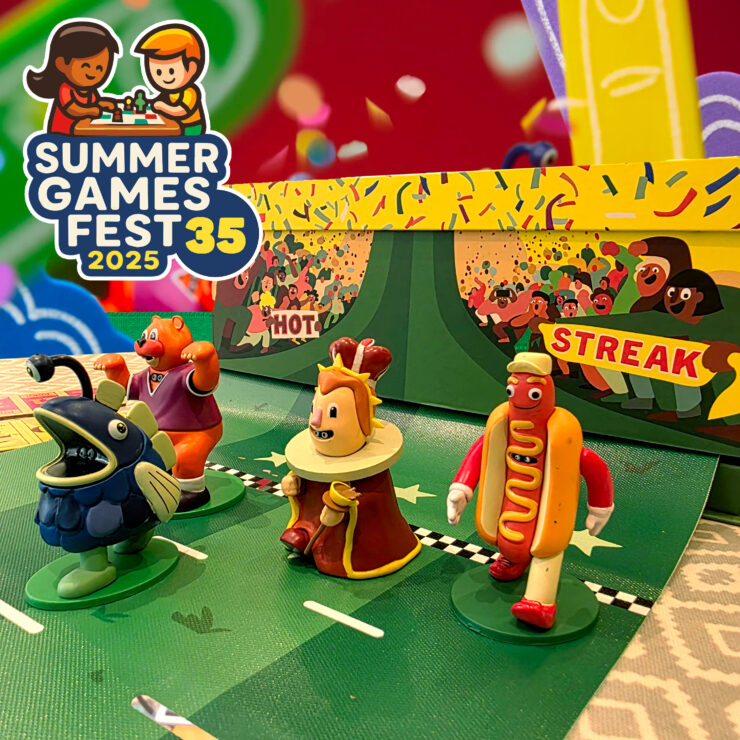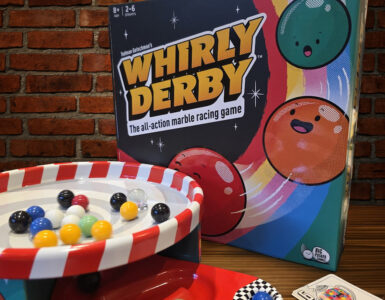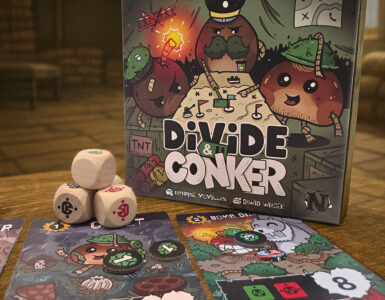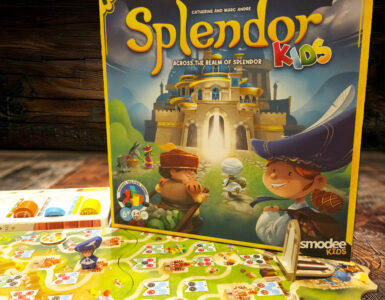I’ve had Hot Streak in my collection for about a month now, and the only reason I’ve left it so long to do a review is because, as well as playing it with the kids, I also wanted to play it with a large group of adults. As I’m sure most of you can appreciate, when you’re a parent, getting a large group of adults together is difficult.
I’m pleased to say, though, that Hot Streak is one of those rare games that you can play with relatively young children but that also works amazingly well with a large group of adults, especially if a few drinks and nibbles are involved.
Hot Streak is essentially a betting game where you’re trying to guess which of the mascots you think is going to win the sports day race. After you get past the initial confusion from small children who assume they’re playing as a specific mascot, rather than betting on who they think is going to win, it’s actually pretty easy to understand.
You start the game by shuffling all of the cards, which control the movement of the mascots. Everyone is dealt three cards, and then a race deck is formed. In a three-player game, we used eleven cards from the main deck. These, along with one “recover plus two” card for each character, make up the full race deck.
The cards contain actions such as falling down, moving backwards, changing lanes, moving forward a certain number of spaces, or jumping to the next star. As a group, you look at these cards before the race, which gives you a rough idea of who might do well, but since the cards will be shuffled and played in a random order, it’s by no means an exact science.
Once you’ve placed your bets – which involves drafting betting slips for who you think will win, or alternatively side bets such as whether a certain mascot will come in the bottom two, or whether two mascots will fall over at the same time – the fun really begins. The side bets are a brilliant addition, especially as a catch-up mechanic, since they can earn you lots of points but come with a bit of risk.
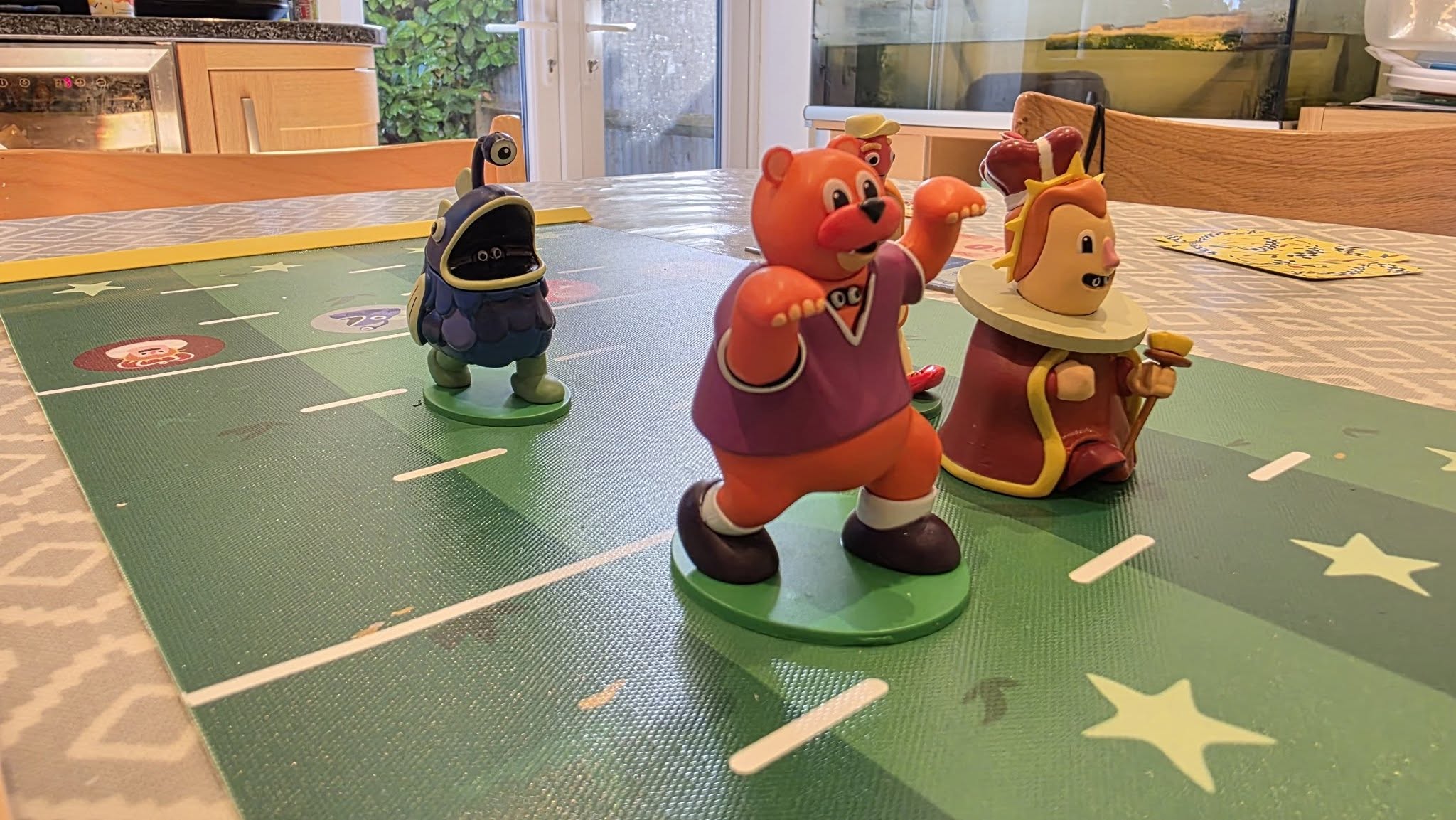
You can play it safe with your betting slip, or flip it over to make a risky bet. Risky slips usually give you a lot more points if your mascot wins, but fewer if they come second or third, and in the case of the side bets, you can even lose points.
Once the bets are in, you look at the three cards you were dealt at the start and secretly insert one into the race deck, giving you a bit of influence over the outcome. The clever bit is that no one knows for sure what cards have been added, or by whom.
You then shuffle the race deck and play the cards out one by one, watching the mascots race. This bit is genuinely exciting – whether you’re a child or a slightly tipsy adult – as you ridiculously cheer on your chosen mascots and scream in despair when they trip just before the finish line.
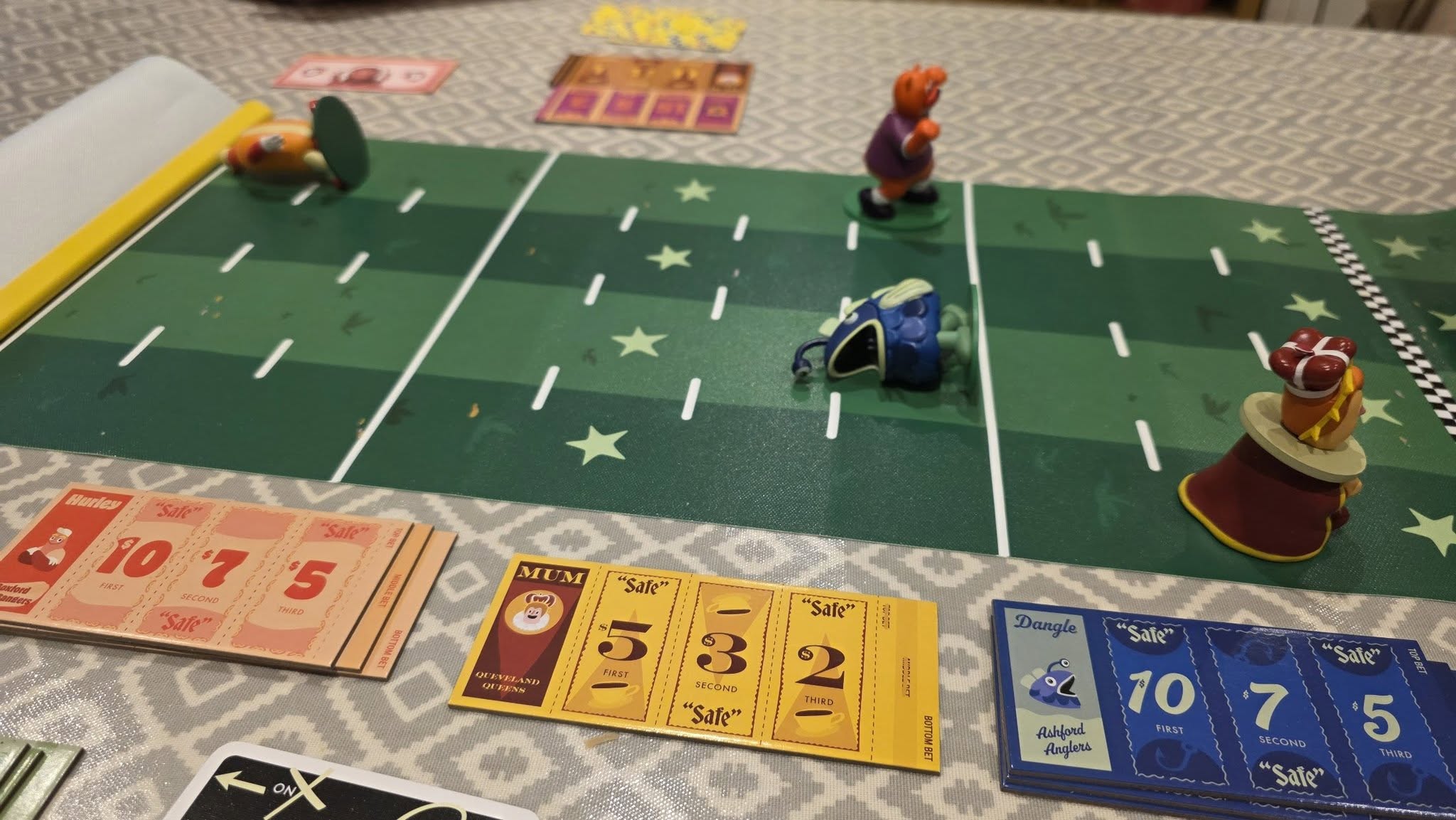
You might think that using the same set of cards would mean similar outcomes each time, but that’s not really the case. While some mascots are clearly more likely to do well based on the initial deck, the randomness of the card order, and the influence of players adding cards, keeps it unpredictable. In one game, a mascot who came last in the first two races came first in the final one.
There are also ways for mascots to be eliminated. If they sidestep off the board, they’re out. If they fall when they’ve already fallen before, they’re eliminated. And if the board shortens at the end of the round and they’re left behind, they’re out too.
After each race, you shuffle the used cards back into the main deck, deal everyone another card to bring them back up to three, and repeat the card-inserting and racing process. This is really important, because while you may have seen strong cards in the first race, there’s no guarantee they’ll still be in the deck for the next one. They might now be in someone’s hand, which changes the odds significantly.
You play three races, and in the final one, you get to choose one of your bets to be a double-or-nothing slip. That means double points if you’re right, or double losses if you’re not. The player with the most money at the end wins.
One of the real highlights of Hot Streak is just how unbelievably high the production values are. The vinyl mascot figures are absolutely beautiful and really stand out. Henry just wanted to play with them afterwards. The way the board folds out from the box using a cog is very clever, and the money notes are linen-finished rather than the thin paper you get in something like Monopoly, which is a really nice touch.
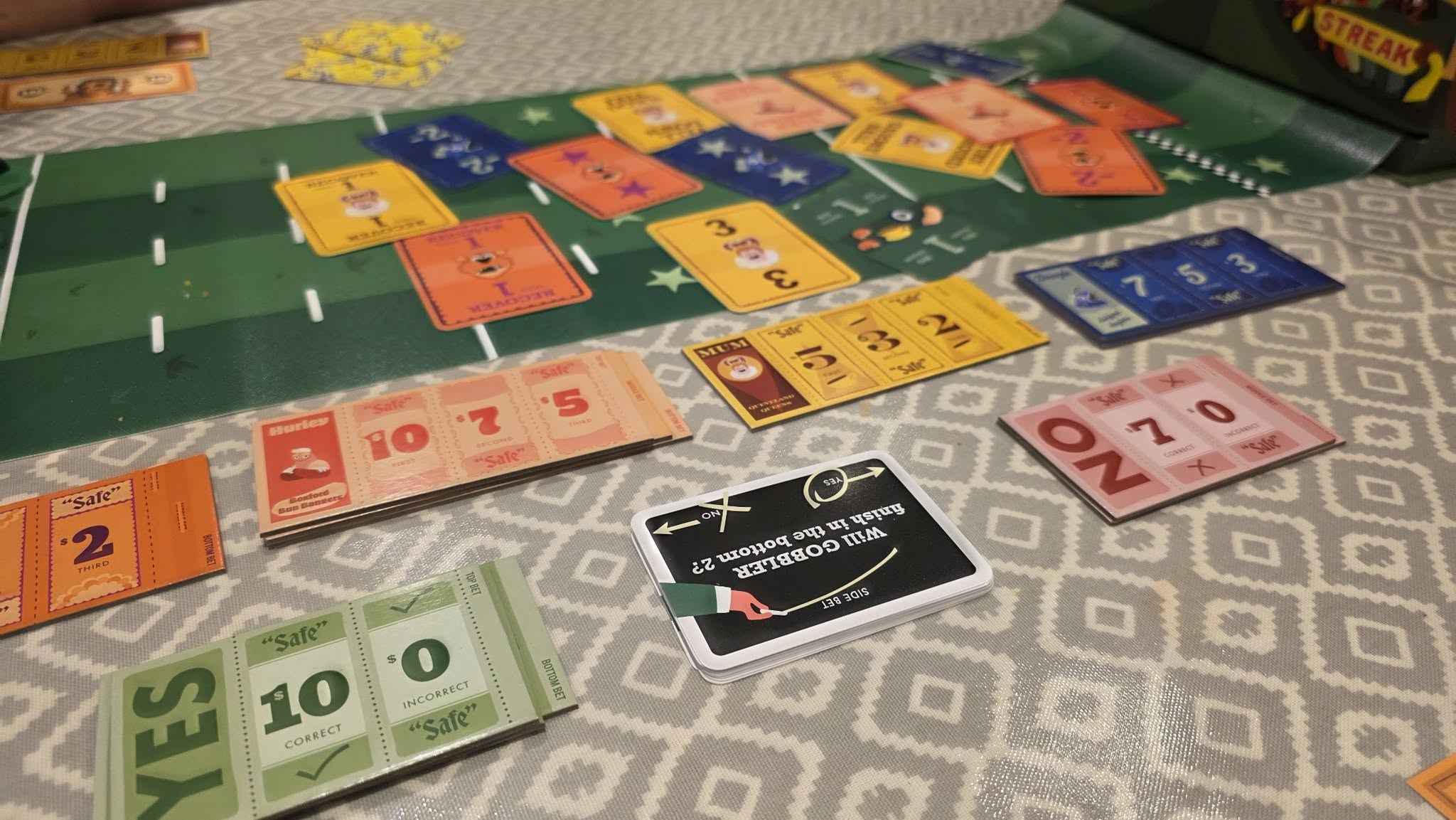
It’s not all perfect. There are a few odd design decisions, like the fact that there’s no insert, meaning you’ll need little bags to stop everything rolling around inside the box. The weirdest one is that the rulebook is ever so slightly too large to fit flat inside the box, so you have to store it at a diagonal, which is just… odd. But honestly, I can overlook all that considering how brilliant the components are overall.
The kids immediately ran to call Mummy down to play again, and that pretty much sums it up. Hot Streak is brilliant. It’s so much fun, surprisingly exciting, and cheering on your little mascot as they leg it along the track is a joy. Playing it with a big group makes it even more unpredictable, with more chosen cards in the race deck adding to the chaos. And for adults, after dinner with a few drinks, it’s a fantastic way to round off an evening.
Hot Streak isn’t the cheapest – you’re probably looking at around £40 to pick it up in the UK – but for what’s in the box, it’s absolutely worth it. If you count it as a party game, which it sort of is and sort of isn’t, then it’s honestly one of the best party games out there.
Fantastic stuff.
Disclaimer: A copy of the game was kindly provided by CMYK for the purposes of review. All of my thoughts and opinions are our own.


